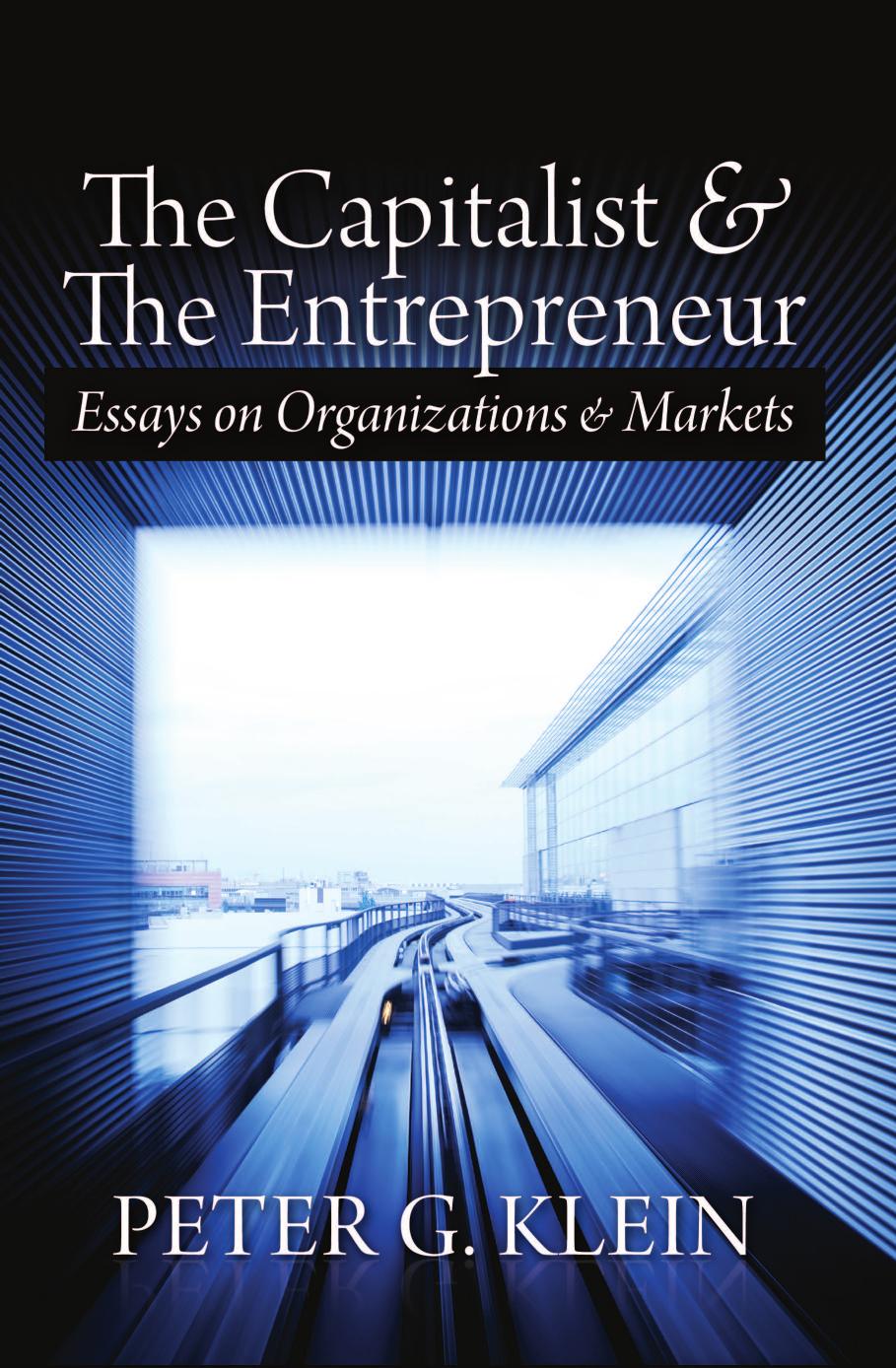The Capitalist and the Entrepreneur by Peter G. Klein

Author:Peter G. Klein [Klein, Peter G.]
Language: eng
Format: epub, pdf
Publisher: Ludwig von Mises Institute
Central Themes of Austrian Economics Before 1974
Before 1974, the bulk of Austrian economics dealt with mundane economic subjects. Menger’s Principles (1871), for example, deals entirely with value, price, and exchange (plus a short section on money). Menger intended the Principles as an introduction to a longer, more comprehensive work. The planned sequel was never written, but from Menger’s notes, Hayek (1934, p. 69) tells us, “we know that the second part was to treat ‘interest, wages, rent, income, credit, and paper money,’ a third ‘applied’ part the theory of production and commerce, while a fourth part was to discuss criticism of the present economic system and proposals for economic reform.” The three volumes of Böhm-Bawerk’s great treatise, Capital and Interest (1884–1912), deal primarily with capital and interest theory but also include the famous sections (in volume II, Positive Theory of Capital) on value and price, introducing the “marginal-pairs” approach to price formation. Wieser’s Social Economics (1914) ranges more widely, as did Wieser throughout his career, but still focuses primarily on fundamental questions of value, exchange, production, factor pricing, and international trade. The Anglo-American economists influenced by the Austrians—Phillip Wicksteed, Frank Fetter, Henry Davenport, and J. B. Clark, for example—also viewed the core of Austrian economics as its theory of value and exchange, not knowledge, expectations, and disequilibrium.4
Possibly the most striking example of an Austrian commitment to mundane economics is Rothbard’s Man, Economy, and State (1962). Of the 12 chapters in the original edition, all but two focus on the details of value, price, exchange, capital, money, competition, and the like. (Chapter 1 deals with methodological and ontological issues, chapter 12 with the theory of government intervention.) Production theory alone gets five chapters. Even if Power and Market is included, the book contains little about subjective expectations, learning, equilibration, emergent orders, and the like. Perhaps for this reason, Vaughn (1994, p. 96) states that Rothbard’s treatise “must have seemed to a typical reader to be more or less familiar economics presented almost exclusively in words with a few controversial definitions, and some strange discontinuous graphs.”
Man, Economy, and State was of course intended as a more elementary and systematic presentation of the contents of Mises’s Human Action (1949), which covers a broader range of philosophical, historical, and sociological subjects (Stromberg, 2004). Human Action begins, for example, with a lengthy methodological and ontological sections and chapters on “Time” and “Uncertainty.” Still, the bulk of the book—the 16 chapters comprising Parts 3, 4, and 5—deal with the core economic subjects of value, price, and exchange. The same is true, at least partly, of another important postwar contribution to Austrian economics, Lachmann’s Capital and Its Structure (1956). Lachmann’s book includes lengthy and insightful discussions of expectations (chapter 2) and “process analysis” (chapter 3), defined as “a causal-genetic method of studying economic change, tracing the effects of decisions made independently of each other by a number of individuals through time, and showing how the incompatibility of these decisions after a time necessitates their revision” (Lachmann, 1956, p.
Download
The Capitalist and the Entrepreneur by Peter G. Klein.pdf
This site does not store any files on its server. We only index and link to content provided by other sites. Please contact the content providers to delete copyright contents if any and email us, we'll remove relevant links or contents immediately.
| Consulting | Entrepreneurship |
| Franchises | Home Based |
| Marketing | New Business Enterprises |
| Nonprofit Organizations & Charities |
Pioneering Portfolio Management by David F. Swensen(6259)
Man-made Catastrophes and Risk Information Concealment by Dmitry Chernov & Didier Sornette(5957)
Zero to One by Peter Thiel(5736)
The Motivation Myth by Jeff Haden(5176)
The Miracle Morning by Hal Elrod(4677)
Elon Musk by Ashlee Vance(4086)
The Art of Persistence: Stop Quitting, Ignore Shiny Objects and Climb Your Way to Success by Michal Stawicki(3638)
Unlabel: Selling You Without Selling Out by Marc Ecko(3626)
Delivering Happiness by Tony Hsieh(3397)
Urban Outlaw by Magnus Walker(3366)
Purple Cow by Seth Godin(3168)
Mastering Bitcoin: Programming the Open Blockchain by Andreas M. Antonopoulos(3014)
The Marketing Plan Handbook: Develop Big-Picture Marketing Plans for Pennies on the Dollar by Robert W. Bly(3007)
The Power of Broke by Daymond John(2936)
The Content Trap by Bharat Anand(2889)
Applied Empathy by Michael Ventura(2865)
The Airbnb Story by Leigh Gallagher(2821)
Keep Going by Austin Kleon(2730)
Radical Candor by Kim Scott(2692)
